Schrödinger’s Cat: The Death of Local Realism
As civilizations and empires emerged in the ancient Mediterranean and Near East, there was a need, a vacuum if you will, for a theological/religious force to keep these vast empires together. One can see this reflected in the proliferation of the pantheon of Egyptian/Greek/Roman gods whose worship dominated their respective cultures and societies in the Mediterranean and North Africa in the first millennium BCE, gods who were synthesized and brought together as the civilizations from which they originated slowly merged and commingled through trade and warfare. Also in the first millennium BCE we find the first vast empires, initially with the Assyrians and Persians and then followed by the Greeks, all of which not only facilitated trade throughout the region but also drove cultural assimilation as well.
In no small measure out of reaction to what was considered dated or ignorant belief systems, belief systems that merely reinforced the ruling class and were not designed to provide real true insight and liberation for the individual, emerged the various Greek philosophical schools and teachings, reflecting a deep seated dissatisfaction with the religious and mythological systems of the time, as well as even the political systems that were dependent on these religious structures for power and authority, to the detriment of society at large from the philosophers perspective. The life and times of Socrates probably best characterizes the forces at work during this period, whose teachings inspired Plato and Aristotle alike whose works guided the development of the Western mind for some two thousand years.
Jesus’s life in many respects runs parallel to that of Socrates, manifesting and reacting to the same set of forces that Socrates rose up against, except slightly further to the East and within the context of Roman (Jewish) rule rather than Greek rule, but still reflecting the same rebellion against what he saw as illegitimate and abusive authoritarian rule that stifled freedom of thought and freedom of worship in particular. Jesus’s message was in many respects lost however, and survives down to us only through translation and interpretation that invariably has diluted and bastardized his true teaching, of which only snippets survive down to us in the Gospels. The works of Plato and Aristotle are extant however, at least a good portion of them are, so we can analyze and digest their comprehensive philosophical and metaphysical (and in many respects theological) belief systems that touch on virtually all aspects of reality, from the nature of existence itself, to the source of happiness and the ideal state; the scope of Aristotle’s epistêmê.
In the Common Era (CE), aka Anno Domini (AD) or the Year of the Lord, monotheism takes root in the West, maturing and evolving in the few hundred years after Jesus’s death and in many respects providing the glue as well as fuel for expansion of first the Roman Empire and then the Byzantine Empire that followed, and then providing the basis of the Islamic Conquests and their subsequent Imperial conquests, the Muslims attesting to the same Abrahamic lineage as the Christians and Jews (of which Jesus was of course one, a fact Christians sometimes fail to remember). Although undoubtedly monotheism did borrow and integrate from the philosophical traditions that preceded it, mainly to justify and solidify their theological foundations for the intellectually minded, with the advent of the authority of the Church which “interpreted” the Christian tradition for the good of the masses, there emerged a lasting trend of suppression of rational, or at the very least free, thinking that was in any way inconsistent with religious authorities’ interpretation of the Bible, the Word of God as they called it, or in any way challenged the power of the Church. In many respects, with the rise in power and authority of the Church we see an abandonment of the powers of the mind, the intellect, which were held so fast and dear to by Plato and Aristotle. Reason was abandoned for faith as it were, blind faith in God. The Dark Ages came and went.
Then another intellectual revolution took place some two thousand years after the one that Socrates started in ancient Greece, one that unfolds in Western Europe over several centuries marking the end of the Dark Ages, starting with what later historians have called the Renaissance, then followed by the Age of Enlightenment, a period characterized by the rejection of religious and socio-political orthodoxy and the rise of rationalism and empiricism as the basis for knowledge and truth, laying the groundwork for the Scientific Revolution which was to follow.
Educational systems akin to colleges, along with a core curriculum of sorts (Scholasticism) start to crop up in Western Europe in the Renaissance and Enlightenment Era, providing access to many of the classic texts and rational frameworks to more and more learned men, ideas and thoughts that expanded upon mankind’s notion of reason and its limits, and its relationship to theology and society, begin to be exchanged via letters and published works in a way that was not possible prior. This intellectual groundswell provided the spark that ended up burning a deep hole in the blind faith in the literal interpretation of not only the Bible, but other revealed Scripture as well, leading to not only waves of skepticism and rationalism from a philosophical perspective, but also providing the driving force behind political revolutions first in England (1688), then America (1775-1783), and then France (1789-1799), forever changing the political landscape in the West.
This era of intellectual growth culminates from a scientific perspective in the abandonment of the geocentric model of the universe, providing the crucial blow into the foundations of all of the Abrahamic religions that had dominated theological and philosophical thought in the West for some two thousand years and laying the foundation for the predominance of science (natural philosophy) and reason over religion that underpins Western thought to this day. This was the Age of Reason of Thomas Paine, and there was no turning back.
Then came Copernicus, Kepler, Galileo and Newton, with many great thinkers in between of course, alongside the philosophical and metaphysical advancements from the likes of Descartes and Kant among others, establishing without question empiricism, deduction and scientific method as the guiding principles behind which knowledge and reality should be based and providing the philosophical basis for the political revolutions that marked the end of the 18th century in England, America and France.
The geometry and Astronomy of the Greeks as it turned out, Euclid and Ptolemy in particular, provided the mathematical framework within which the advancements of the Scientific Revolution were made. Ptolemy’s geocentric model was upended no doubt in the Enlightenment Era, but his was the model that was refuted in the new system put forth by Copernicus some 15 centuries later. It was the reference point. And Euclid’s geometry was superseded, expanded really, by Descartes’s model, i.e. the Cartesian coordinate system, which provided the basis for analytic geometry and calculus, the mathematical foundations of modern physics that are still with us today.
The twentieth century saw even more rapid developments in Science and in Physics, with the expansion of Newtonian Mechanics with Einstein’s Theory of Relativity in the early 21st century, and then with the subsequent advancement of Quantum Mechanics which followed close behind which provides the theoretical foundation for the digital world we live in today.[1] But the Scientific Revolution of the 17th, 18th and 19th centuries did not correspond to the complete abandonment of the notion of an anthropomorphic God. The advancements of this period of Western history provided more of an extension of monotheism, a more broad theoretical and metaphysical framework within which the God was to be viewed, rendering the holy texts not obsolete per se but rendering them more to the realm of allegory and mythology, and most certainly challenging the literal interpretations of the Bible and Qurʾān that had prevailed for centuries.
The twentieth century was different though. Although you see some scattered references to God (Einstein’s famous quotation “God does not play dice” for example), the split between Religion and Science is cemented in the twentieth century. The analytic papers and studies that are done, primarily by physicists and scientists, although in some cases have a metaphysical bent or at least some form of metaphysical interpretation (i.e. what do the theories imply about the underlying reality which they intend to explain), leave the notion of God out altogether, a marked contrast to the philosophers and scientists of the Scientific Revolution some century or two prior within which the notion of God continued to play a central role if only in terms of the underlying faith of the authors.
The shift in the twentieth century however, which can really only be described as radical even though its implications are only inferred and rarely spoken of directly, is the change of faith from an underlying anthropomorphic entity/deity that represents the guiding force of the universe and mankind in particular, to a faith in the idea that the laws of the universe can be discovered, i.e. that they exist eternally, and that these laws themselves are paramount relative to religion or theology which by its very nature does not rest on any sound empirical foundation. Some Enlightenment Era philosophers of course would take issue with this claim, but twentieth century Science was about what could be proven experimentally in the physical world, not about what could be the result of reason or logical constructs.
This faith, this transformation of faith from Religion toward Science as it were, is implicit in all the scientific developments of the twentieth century, particularly in the physics community, where it is fair to say that any statement or position of the role of God in science reflected sheer ignorance, ignorance of the underlying framework of laws that clearly governed the behavior of “things”, things which were real and which could be described in terms of qualities such as mass, energy, momentum, velocity, trajectory, etc. These constructs were much more sound and real than the fluff of the philosophers and metaphysicians, where mind and reason, and in fact perception, was on par with the physical world to at least some extent.
In this century of revolutionary and accelerated scientific advancement, the so-called Quantum Era, advancement which has fundamentally transformed the world within which we live and has facilitated the development of nuclear energy, weapons of mass destruction, and digital computer technology, and has in many respects driven tremendous economic progress and prosperity throughout the world, it is science driven at its core by advanced mathematics which has emerged as the underlying truth within which the universe and reality is perceived. Mathematical theories and their associated formulas that predicted the datum and behavior of not only the objective reality of the forces that prevail on our planet, but also explain and predict the behavior of grand cosmological forces; laws which describe the creation and motion of the universe and galaxies, the motions of the planets and the stars, and even laws that describe the inner workings of planetary and galaxy formation, stars and phenomenon as strange and perplexing as black holes.
And then to top things off, in the very same century we find that in the subatomic realm the world is governed by a seemingly very different set of laws, laws which appear fundamentally incompatible with the laws that govern the “classical world”. With the discovery of the laws of Quantum Mechanics, we begin to understand the behavior of the subatomic realm, a fantastic, mysterious and extraordinary (and seemingly random) world which truly defies imagination, a world where the notion of continuous existence itself is called into question. The Ancient Greek philosophers could have never foreseen wave-particle duality for example, and in fact no scientist before the twentieth century would have guessed that the underlying substratum of reality could be as strange and perplexing as predicted by Quantum Theory.
But something was lost as these advancements and “discoveries” were made. These scientific advancements represented “progress” no doubt, bettering the human condition from the perspective of increased flow of goods and services, advancements in knowledge and science that have had a direct impact on our ability to combat disease and sickness, the ability to support the lives of billions of humans and send probes and space ships throughout the solar system to explore other worlds – all of these advancements and innovations and many more that are products of the technological and scientific “discoveries” of the modern era.
On the other hand, as a byproduct of these advancements a sort of social and/or theological intellectual rift had been created, one that distanced us as humans not only from each other, but also from the natural world and environment, the earth, to which our fate is ultimately tied. In this context, it seems that sort of replacement of the old tried and true religious systems which had served mankind for some 1500 years was needed, and this vacuum as it were is one of the main reasons why the ancient Eastern philosophical systems have become so prevalent in the West in the last 100 years or so. People are looking for different metaphysical and spiritual frameworks within which to view the world that are not steeped in outdated and historically flawed “books” and “scripture” that do not correspond or align to what we know is “true” and how the world really works.
Without religion the however, one can make a strong case for the absence of any basis for the moral and ethical framework of society, outside of the rule of law itself. And while this is a powerful force no doubt, one upon which the foundations of democracy in the West is based, one is hard pressed to see real justice and equality, and social harmony, within the modern social systems that are based upon this rule of law. At some level, the individual and personal foundations of morality and ethics had effectively been abolished with the advent of science, flooding the Western world into conflicts over wealth and access to resources and reinforcing materialism and greed, the basic underlying principles of capitalism and free markets.
It wasn’t science’s fault per se, but the advancements in the last 100 years or so, despite their inherent benefits, did leave a vacuum of sorts from a social, ethical and moral perspective, leaving most of the intellectual community of the West in need and search of some sort of replacement to that which had been lost from a moral and ethical point of view once religion was relegated to, arguably its rightful place, as subservient to Reason. But without religion as a moral force in society and civilization at large, there was no longer any self-governing force of “do good to thy neighbor” anymore, no fellowship of the common man. What was left to shape our world seemed to be a “what’s in it for me” and a “let’s see what I can get away with” attitude, one that floods the court systems of the West and at some level fuels radical religious groups and terrorism itself which sees these Western values as intrinsically “bad” or even “evil”, leading to more warfare and strife rather than peace and prosperity.
With the loss of God, his complete removal from the intellectual framework of Western society, there was a break in the knowledge and belief in the interconnectedness of humanity and societies at large that had served mankind for thousands of years since they had first learned to communicate with each other and first told stories about how the world was created and how mankind was “born” and what his relationship to the cosmic, universal and natural order was.
Quantum Theory however, somewhat ironically, called this loss of faith of interconnectedness directly into question. If everything was connected, entangled as it were, at the subatomic realm, if this was a proven and scientifically verified fact, how could we not take the next logical step and ask what that meant to our worldview? What did that mean with respect to our understanding of materialism and determinism which underpinned Classical Mechanics as well as its socio-economic cousins democracy and capitalism? “That’s a philosophical problem” did not seem to be an adequate response, or one which reflects humanities responsibilities not only to each other, but to the world at large to which their fates again are ultimately tied.
Abandonment of religion for something more profound was a good thing no doubt, but what was it that people really believed in nowadays in the Quantum Era? That things and people were fundamentally separate, that they were operated on by forces that determined their behavior, and that the notion of God was for the ignorant and the weak and that eventually all of the underlying behavior and reality could be described within the context of the same science which discovered Relativity and Quantum Mechanics. Or worse that these questions themselves were not of concern, that our main concern is the betterment of ourselves and our individual families even if that meant those next to us would need to suffer for our gain? Well where did that leave us? Where do ethics and morals fit into a world driven by greed and self-promotion?
To be fair, there was some movement toward some sort of more refined theological perspective toward the end of the twentieth century and into the 21st century, as Yoga starts to become more popular and some of the Eastern theo-philosophical traditions such as Daoism and Buddhism start to gain a foothold in the West, looked at perhaps as more rational and reasonable systems of belief than the religions of the West which have been and remain such a source of conflict and disorder throughout the Western world. But the driving force for this adoption of Yoga in the West seemed to be more aligned with materialism and self-gain than it was for spiritual advancement and enlightenment. This “Eastern” philosophical perspective of compassion and mindfulness wasn’t permeating into the broader society. It most certainly wasn’t being taught in schools, the next generation, the Digital Generation, which in all likelihood look to be even more materialistic than their predecessors if that’s possible, theology being relegated to the domain of Churches, Synagogues and Mosques, the discipline as a whole wasn’t even fair game to teach in schools anymore.
The gap between Science and Religion that emerged as a byproduct of the Scientific Revolution remained significant, the last thing you were going to find were scientists messing around with the domain of theology, i.e. Religion, for that matter. Metaphysics maybe, in terms of what the developments of science said about reality, but most certainly not theology and definitely not God. And so our creation myth is bereft of a Creator – the Big Bang has no actors, no Intelligent Designers, no Demiurge, simply the primal nuclear and subatomic forces at work against particles that expanded and formed gases and planets that ultimately led to us – the thinking, rational animal who is actually capable of contemplating and discovering the laws of the universe and question our place in them, all a byproduct of natural selection, the guiding force was apparently random chance, time, and the genetic encoding of the will to survive as a species. Such is the teachings of Darwin, perhaps one of if not the most influential of scientists in the modern era in shaping our understanding of our place in the universe and how we came to be.
Perhaps Quantum Theory, Quantum Mechanics, could provide that bridge. There are some very strange behaviors that have been witnessed and modeled (and proven by experiment) at the quantum scale, principles that defy our notions of space and time that were cemented in the beginning of the twentieth century by Einstein and others. For if there were gods or heroes in our culture today, they were the Einsteins, Bohrs, Heisenbergs and Hawkings of our time that defined our reality and determined what the next generation of minds were taught, those that broke open the mysteries of the universe with their minds and helped us better understand the world we live in. Or did they?
Even after the continued refinement and experimental evidence that supported Quantum Mechanics however, there did arise some significant resistance to the completeness of the theory itself, or at least questions as to its true implications with respect to Relativity and Newtonian Mechanics. The most notable of these criticisms came from Einstein himself, most infamously encapsulated in a paper he co-authored and published in 1936 with two of his colleagues Boris Podolsky and Nathan Rosen which came to be known simply as the EPR Paper, or simply the EPR Paradox, which called attention to what they saw as the underlying inconsistencies of Quantum Theory, its completeness, that still required explanation. In this paper, they extended some of the quantum theoretical models to different thought experiments and scenarios to yield what they considered to be at very least improbable, if not impossible, conclusions.
They postulated that given the formulas and mathematical models that described the current state of Quantum Mechanics, i.e. the description of a wavefunction that described the probabilistic outcomes for a given subatomic system, that if such a system were transformed into two separate systems, split apart if you will, by definition both systems would then be governed by the same wavefunction and whose subsequent behavior and state would be related, no matter what their separation was in spacetime, violating one of the core tenets of classically physics, namely communication faster than the speed of light. At the time, this theoretical result was proven mathematically, although it was not actually proven experimentally until much later.
They went on to show that if this was true, it implies that if you have a single particle system that is split into two separate particles and subsequently measured, these two now separate and distinct particles would then be governed by the same wavefunction, and in turn would be governed by the same uncertainty principle put forth by Heisenberg; namely that a defined measurement of a particle in system A will cause its conjugate value in system B to be undeterminable or correlated, entangled, even if the two systems had no “physical” contact with each other and were light years apart from each other, the so-called measurement problem.
But hold on a second, how could this be possible? How could you have two separate physical systems, that were governed by the same wavefunction, or behavioral equation so to speak, that no matter how far apart they were, or no matter how much time elapsed between measurements, that you had a measurement in one system which fundamentally correlated with (or uncorrelated with, the argument is the same) a measurement in the other system that it was physically separate from beyond the limits established by Relativity? They basically took the wavefunction theory, which governs behavior of quantized particles, and its corresponding implication of uncertainty as outlined by Heisenberg’s uncertainty principle, and extended it to multiple, associated and related subatomic systems, related and governed by the same wavefunction despite their separation in space (and time) yielding a very awkward and somewhat unexplainable result, at least unexplainable in terms of Classical Mechanics.
The question they raised boiled down to, how could you have two unrelated, distant systems whose measurements or underlying structure depended upon each other in a very well defined and mathematically and (theoretically at the time but subsequently verified via experiment) empirically measurable way? Does that imply that these systems are communicating in some way either explicitly or implicitly? If so that would seem to call into question the principle of the fixed speed of light that was core to Relativity Theory. The other alternative option seemed to be that the theory was incomplete in some way, which was Einstein’s view. Were there “hidden”, yet to be discovered variables that governed the behavior of quantum systems that had yet to be discovered, what came to be known in the literature as hidden variable theories?
If it were true, and in the past half century or so many experiments have verified this theoretical postulate, it is at the very least extremely odd behavior, or perhaps better put reflected very odd characteristics, characteristics certainly inconsistent with prevailing theories of what has come to be known as Classical Mechanics (Classical Mechanics now viewed in contrast to Quantum Mechanics which in no small measure due to the EPR Paradox has been proven to be inconsistent with Classical Mechanics at a very basic level). Or perhaps better put, inconsistent with the underlying assumptions with respect to how “reality” had been described and understood.
Are these two subsystems, once correlated, communicating with each other? Is there some information that is being passed between them that violates the speed of light boundary that forms the cornerstone of modern, Classical Mechanics? This seems unlikely, and most certainly is something that Einstein felt uncomfortable with. This “spooky action at a distance”, which is what Einstein referred to it as, seemed literally to defy the laws of Physics. But the alternative appeared to be that this notion of what we consider to be “real”, at least as it was classically defined, would need to be significantly modified in some way to take into account this correlated behavior between particles or systems that were physically separated beyond classical boundaries.
From Einstein’s perspective, two possible explanations for this behavior were put forth, 1) either there existed some model of behavior of the interacting systems/particles that was still yet undiscovered, what came to be known in the physics community as hidden variables, or 2) the notion of locality, or perhaps more aptly put as the tenet of local determinism which Einstein and others associated directly and unequivocally with “reality” and was a core assumption to Classical Mechanics as a whole, had to be drastically modified if not completely abandoned.
In Einstein’s words however, the language for the first alternative that he seemed to prefer was not that there were hidden variables per se, but more so that Quantum Theory as it stood in the first half of the twentieth century was incomplete. That is to say that some variable, coefficient or hidden force was missing from the underlying mathematical models of Quantum Mechanics which accounted for not only the lack of determinism inherent in the mathematics itself as represented by the wavefunction and the notion of “collapse” at the moment of observation, but also explained the correlated “behavior”, or correlated measurements as it were, of these once bound but then physically separate particles that were separate beyond classical means of communication in any way but still nonetheless correlated to each other from a measurement perspective. For Einstein it was the completeness option that he preferred, unwilling to consider the idea that the notion of locality was not absolute.
Ironically enough, hindsight being twenty-twenty and all, Einstein had just revolutionized Classical Mechanics with Relativity Theory by postulating that there was no such thing as absolute truth, or absolute reality, on the macroscopic and cosmic physical plane so one might be inclined to think that he would have been more open to relaxing this requirement of absolutely defined reality in the quantum realm, but apparently not, speaking to the complexities and subtleties of the implications of Quantum Theory as well as the strength of conviction within the Physics community for locality and determinism and basic underlying principles of Physics.
Probably the most widely known metaphor that illustrated Einstein and other’s problems with the theoretical implications of Quantum Theory is the thought experiment, or paradox as it is sometimes referred to as, called Schrödinger’s cat, or Schrödinger’s cat paradox.[2] In this thought experiment, which according to tradition emerged out of discussions between Schrödinger and Einstein just after the EPR Paper was published, a cat is placed in a fully sealed and fully enclosed box with a radioactive source subject to certain measurable and quantifiable rate of decay, a rate that is presumably less than the life time of a cat. In the box with the cat is one internal radioactive monitor which measures if there exist any radioactive particles in the box (any number >= 1), along with a flask of poison that is triggered by the radioactivity monitor if it is triggered. According to Quantum Theory, which governs the rate of radioactive decay with some random probability distribution over time, it is impossible to say at any given moment, until the box is opened in fact, whether or not the cat is dead or alive. The implication here that the cat is in an undefined state until the box is opened, implying of course that there is nothing definitive that we can say about the state of the cat independent of actually opening the box.
Illustration of Schrödinger’s Cat paradox.[3]
This calls into question, bringing the analogy to the macroscopic or realistic level, whether or not according to Quantum Theory reality can be defined independent of observation (or measurement) within the context of the cat, the box and the radioactive particle and its associated monitor. Or of course taken to the logical next step, if Quantum Mechanics does accurately represent the substratum of physical reality, can reality itself at any level be fully determined independent of observation.
Now although this all might seem to be simply a philosophical problem, with no real bearing on physics proper, the theoretical and metaphysical implications of this, if it is in fact true, are quite profound. It means that if Quantum Mechanics is held to be true, and if the physical world around us is governed by Quantum Theory at a basic level, then the idea that reality has an existence outside of any act of measurement or observation must be abandoned. This represents a bit of a problem to the Physics community at large, as reflected in the widespread adoption and unwavering belief in Classical Mechanics, as put forth initially by Newton and enhanced and expanded upon by Einstein, which relies quite firmly on this assumption of local realism, i.e. the notion that physical reality has a state that is fully determined and quantifiable independent of any observer or act of observation.
In the course of developing this experiment, Schrödinger coined the term entanglement[4], which is at some level is a re-factoring or rewording of Heisenberg’s uncertainty principle but taken to the next theoretical implicative step. To Schrödinger however, this concept of entanglement was the defining characteristic of Quantum Mechanics that made it fundamentally incompatible with Classical Mechanics. Schrödinger himself is probably the best person to turn to understand what he meant by entanglement and he describes it thus:
When two systems, of which we know the states by their respective representatives, enter into temporary physical interaction due to known forces between them, and when after a time of mutual influence the systems separate again, then they can no longer be described in the same way as before, viz. by endowing each of them with a representative of its own. I would not call that one but rather the characteristic trait of quantum mechanics, the one that enforces its entire departure from classical lines of thought. By the interaction the two representatives [the quantum states] have become entangled.[5]
The principle of entanglement, which again has been proven to be verifiably true now via a variety of experiments, calls directly into question of what is known as local realism – local in the sense that all the behaviors and datum of a given system are determined by the qualities or attributes of only those objects within that given system which is bounded by spacetime or some force that is acting upon said system as defined by Newtonian Mechanics and Relativity, and real in the sense that the system itself exists independent of observation or apparatus/elements of observation.
Taking the non-local theory explanation to the extreme, and something which has promoted quite a bit of what can reasonably be called hysterical reaction in some academic and pseudo-academic communities even to this day, is that the existence of proven correlation of two pairs of entities that are separated in spacetime far enough from each other so that the speed of light boundary could not be crossed – if the two separated particles do indeed seem to hold a distinct and mathematically predictable correlation, i.e. are truly entangled – then all of Classical Mechanics is called into question since this could only be possible if these two separate systems communicated with each other faster than the speed of light which is of course a core tenet upon which all of Classical Mechanical models of the universe rest. Einstein specifically called out these spooky action at a distance theories as defunct, he so believed in the invariable tenets of Relativity, and it’s hard to argue with his position quite frankly because correlation does not necessarily imply communication. But if local realism and its underlying tenets of determinism are to be held fast to, then where does that leave Quantum Theory and how are its conclusions to be reconciled with Relativity and Newtonian Mechanics?
This problem gets somewhat more crystalized, or well defined, when the physicist John Stewart Bell (1928-1990) publishes in 1964 a paper entitled On the Einstein Podolsky Rosen Paradox. In this paper Bell takes the EPR Paradox argument one step further and asserts, proves mathematically via a reductio ad absurdum argument in fact, that if Quantum Theory is true, that in fact no hidden variable theory could possibly exist that reproduces all of the predictions of Quantum Mechanics and is also consistent with locality. In other words, Bell asserted that the hidden variable hypothesis, or at the very least a broad category of hidden variable hypotheses, were fundamentally incompatible with Quantum Theory itself, unless the notion of locality was abandoned or at least relaxed to some extent. In his own words:
In a theory in which parameters are added to quantum mechanics to determine the results of individual measurements, without changing the statistical predictions, there must be a mechanism whereby the setting of one measuring device can influence the reading of another instrument, however remote. Moreover, the signal involved must propagate instantaneously, so that a theory could not be Lorentz invariant.[6]
Lorentz invariance is a key tenet and assumption of Relativity Theory and basically states that experimental results in Classical Mechanics are independent of any movement of a laboratory, or system state boundaries of a given experiment, in spacetime. What Bell is saying here essentially is that even if hidden variables were added to Quantum Theory, there still must be present some form of communication, or correlation, between these two separate but correlated systems that violates the boundaries of light speed communication as laid out by Classical Mechanics. More specifically what he’s saying is that if you have assume hidden variables as the answer to Quantum Theories completeness problem, then you needed to abandon at the very least the Lorentz invariance assumption, which again basically restates that Quantum Mechanics and Classical Mechanics are incompatible at a very basic level.
This assertion came to be known as Bell’s Theorem and at its core posits, proves to a large extent, that Quantum Mechanics and the concept of locality, which again states that an object is influenced directly only by its immediate surroundings bounded by spacetime constraints set by Classical Mechanics and is a cornerstone of the theories of Newton and Einstein regarding the behavior of matter and the objective world in toto, are mathematically incompatible and inconsistent with each other, providing further impetus as it were, that this classical notion of locality was in need of closer inspection, modification or perhaps even abandoned entirely.[7]
Criticisms of Bell’s Theorem and the related experiments aside however, if you believe Quantum Theory, and you’d be hard pressed not to at this point, you must conclude that the theory violates and is inconsistent with Relativity in some way, a rather disconcerting and problematic conclusion for the twentieth century physicist to say the least and a problem which plagues, and motivates, much of the research in Theoretical Physics to this day, all centered around trying to bridge the theoretical gap between the mathematical and theoretical models that govern the behavior of bodies or objects at the macro and cosmic scale, i.e. Relativity Theory, and the mathematical and theoretical models that govern the behavior of “things” at the subatomic scale, i.e. Quantum Theory.
If you stop and think about it for a second, this subatomic world and how it is now understood to behave represents a radical departure from how we typically perceive the world around us on a human and macro, and even cosmic, scale. People walk down the street, taking one step after the other. People get on planes and travel from one side of the country to the other, one side of the world to the other in a matter of hours. In all of these movements, our trajectories and paths are mapped conceptually through a continuum of states and values represented by a reality of space and time that have been mapped out for us over the last two thousand years by philosophers, mathematicians, scientists and physicists such Euclid, Minkowski, Descartes, and Einstein among others. We think of the world as the interaction between independent bodies and objects that act and react to each other via the means of external forces. This isn’t just a physics idea, these very basic principles are hammered into our heads from an early age and represent the intellectual paradigm within which we eat, breathe, sleep and interact with the world, and people, around us.
The quantum realm, which is the substratum of reality within which all physical objects, animate or inanimate, “exist” does not behave according to the same laws or principles however, it is a non-continuous world that moves with bursts of energy and discrete changes of state, constantly emitting energy, a world that is very different that the one we normally perceive and conceptualize in our day to day lives. These bursts of energy, changes in quantum state, can be very accurately mathematically modeled and predicted from a statistical point of view, but do not obey classically deterministic behavioral models and exhibit strange properties like entanglement and uncertainty. These revolutionary ideas advanced by de Broglie, Max Planck, Schrödinger, Bohr and Einstein in the first half of the 20th century have had a profound impact on scientific thought and our perception of reality itself and their import cannot be understated. At some level, it has changed the entire way we think about the world, at least the subatomic world, and it has presented a whole host of theoretical challenges that are yet to be resolved, or fully integrated, even today.
Quantum Theory then, as expressed with Bell’s Theorem, Heisenberg’s uncertainty principle and this idea of entanglement, asserts that there exists a level of interconnectedness between physically disparate systems that defies at least some level the Classical Mechanics notion of deterministic locality, pointing to either the incompleteness of Quantum Theory or to the requirement of some sort of non-trivial modification or relaxation of the assumption of local realism which has underpinned Classical Mechanics for the last few centuries if not longer.
In other words, the implications of Quantum Theory, a theory which has been proven over and over again and has very strong predictive power (stochastically speaking) and underlies much of the technological advancement of the modern era, is that there is something else is at work that connects the state of particles or things at the subatomic scale that we even to this day struggle to explain. Einstein himself struggles with this notion, and its profound implications, even toward the end of his life in 1954 when he says:
…The following idea characterizes the relative independence of objects far apart in space, A and B: external influence on A has no direct influence on B; this is known as the Principle of Local Action, which is used consistently only in field theory. If this axiom were to be completely abolished, the idea of the existence of quasienclosed systems, and thereby the postulation of laws which can be checked empirically in the accepted sense, would become impossible….[8]
There is no question as to the soundness of the mathematics behind Quantum Mechanics and there is now a very large body of experimental evidence that supports the underlying theoretical predictions of entanglement as well as experimental verification of Bell’s Theorem and the EPR Paradox. What is somewhat less clear however, and what arguably may belong more to the world of metaphysics and philosophy rather than Physics, is how Quantum Theory is to be interpreted as a representation of reality given the state of affairs that it introduces, or perhaps better put the assumptions of local realism that it calls into question.
What does Quantum Theory tell us about the world we live in, what is its underlying ontology irrespective of the soundness of its predictive power? This is a question that physicists, philosophers and even theologians have struggled with since the theory has gained wide acceptance and prominence in the scientific community since the 1930s.
[1] For example, without the understanding of the principles of Quantum Mechanics, we wouldn’t have transistors which are the cornerstone of modern computing.
[2] Erwin Schrödinger made many of the fundamental discoveries in the foundation of Quantum Mechanics, most notably the wavefunction which described the behavior of subatomic particles. He shared some of the same concerns of standard interpretations of Quantum Mechanics with Einstein, as illustrated in his cat paradox that he is so well known for.
[3] A cat, a flask of poison, and a radioactive source are placed in a sealed box. When an internal monitor detects radioactivity (i.e., a single atom decaying), the flask is shattered, releasing poison that kills the cat. The implications of standard interpretations of Quantum Mechanics that after a period of time, the cat can be said to be potentially both alive and dead, i.e. where the state is only completely “determined’ once the box is opened up and the cat is “observed” to be dead or alive. In other words, when exactly does quantum superposition end and reality begin, or collapse as it were into one possible reality or another. From Wikipedia contributors, ‘Schrödinger’s cat’, Wikipedia, The Free Encyclopedia, 3 December 2016, 19:03 UTC, <https://en.wikipedia.org/w/index.php?title=Schr%C3%B6dinger%27s_cat&oldid=752850801> [accessed 3 December 2016].
[4] Actually, Verschränkung in German.
[5] Schrödinger, E. (1935) Discussion of Probability Relations Between Separated Systems. Proceedings of the Cambridge Philosophical Society, 31: pg. 555
[6] Bell, John (1964). On the Einstein Podolsky Rosen Paradox. Physics 1 (3): 195–200.
[7] Although there still exists some debate among physicists as to whether or not there is enough experimental evidence to prove out Bell’s Theorem beyond a shadow of a doubt, it seems to be broadly accepted in the scientific community that this property of entanglement exists beyond Classical Mechanical boundaries, calling into serious question Classical Mechanics assumptions of local realism. However, the question as to whether or not all types of hidden variable theories are ruled out by Bell’s Theorem appears to be a legitimate question and is still up for debate at some level, and perhaps one of these theoretical “loop holes” in Bell’s Theorem is the one which Bohm and Hiley take advantage of with their Causal, or Ontological Interpretation of Quantum Theory which expands upon Quantum Mechanics to try and explain some of these problems and inconsistencies from a Classical Mechanics point of view (more on Bohmian Mechanics below).
[8]Albert Einstein, Quantum Mechanics and Reality (“Quanten-Mechanik und Wirklichkeit”, Dialectica 2:320-324, 1948).

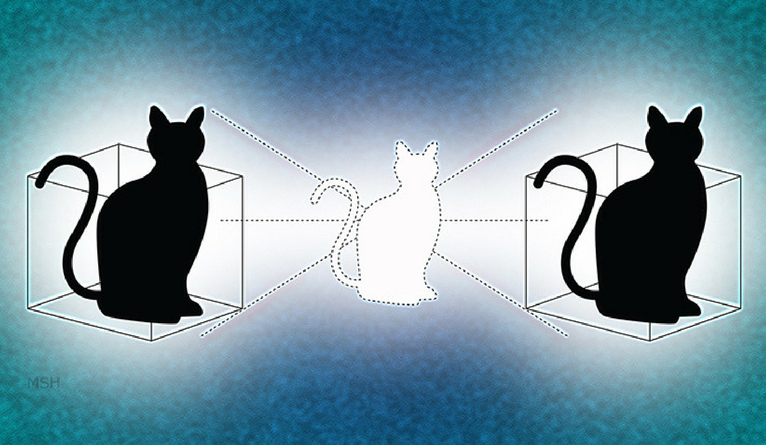



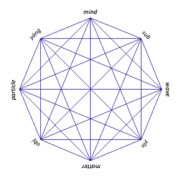
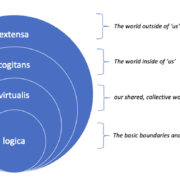
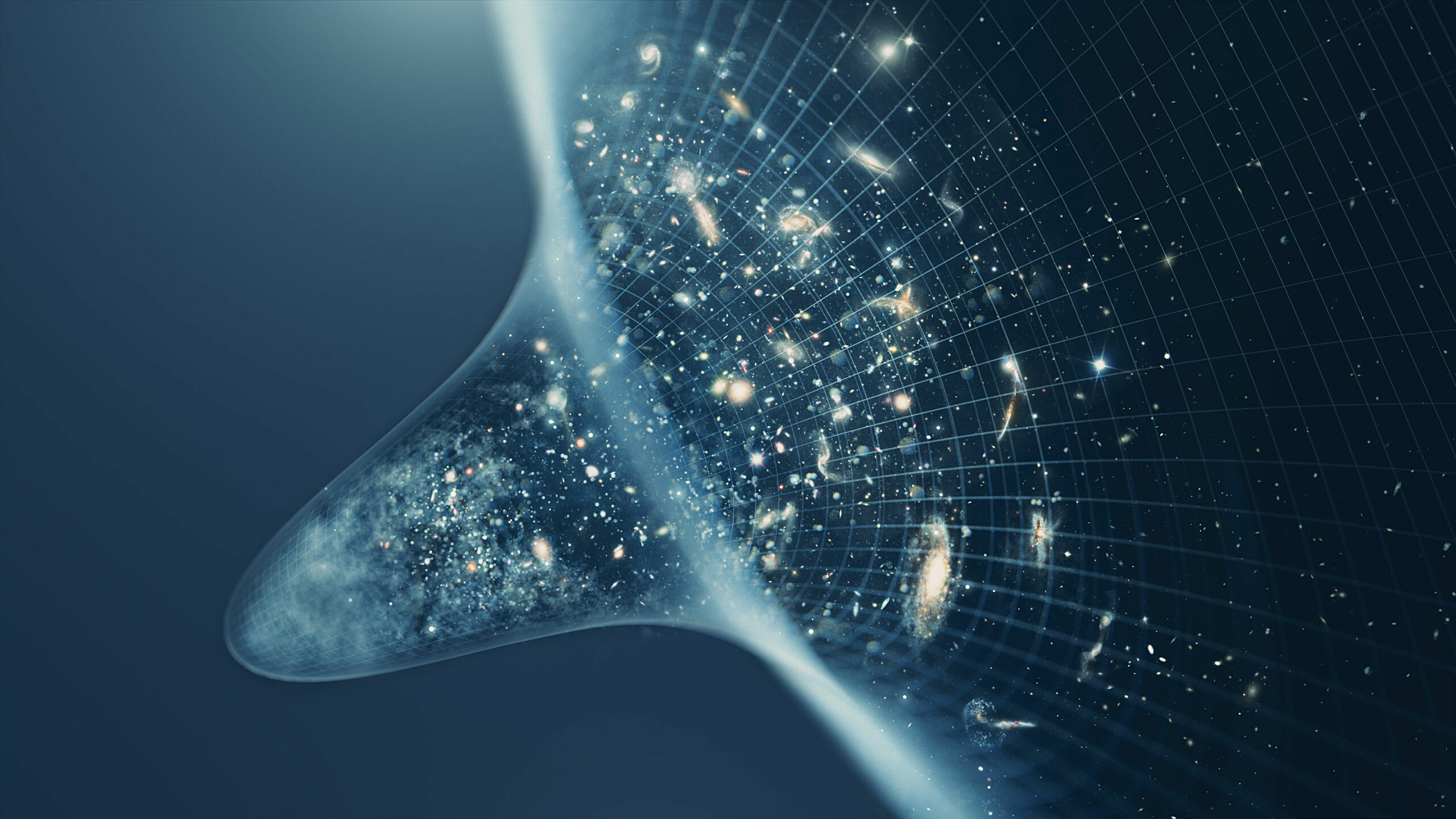


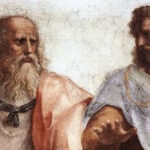
A well researched article. Great to see Socrates’ ideas in the context of Schrodinger. Great share👍😊